The major shift for Avignon came in 1303 when, amidst chaos and confusion in Rome, a Frenchman – Clement V – was named pope (there is a question of bribery having been involved), one that included transferring the seat of the Papacy to a safer place. The Angevin Counts of Provence, who were papal allies, were quick to welcome the new pope to the city of Avignon. When Clement V died, he was immediately replaced by the vote of French cardinals, who continued the tradition of embracing a French pope and distancing the power of Rome. These successive popes built palaces upon palaces as the strength of their power took hold to create the Palais des Papes, a residence which was confirmed in 1348 when the Papacy bought the town of Avignon outright from Jeanne I of Naples, an Angevin Countess of Provence who was given 80,000 florins for the sale along with an absolution for her possible involvement in the murder of her husband.
So was Avignon built on blood? You could say that and certainly the years of the Avignon Papacy were considered a dark time. With the residency came money and with the money, especially in the hands of extremely lenient popes, came quite a lot of trouble. As the great poet Petrarch declared, “Avignon is the hell of living people, the thoroughfare of vice, the sewers of the earth…Prostitutes swarm on the papal beds.” Under papal tolerance it was known as a ville ouvert or “open town” that would welcome outcasts such as criminals and heretics. That stance formally remains today and one can come across some fairly shady characters while strolling the rue de la Republique.
In 1377, Italy was finally able to bring about the return of the Papacy to Rome and as the seventh Avignon pope died while there, he was replaced by an Italian one. This created an enormous rift, called the Western or Second Great Schism, as the French cardinals immediately elected an antipope to rule in Avignon as well. This feud continued until 1403 when the French people sided with Rome and sent an army to send the antipope packing. Cardinal legates from Rome guided the city – still with a very lax hand – for the next three and a half centuries until the French Revolution, which was, unsurprisingly, especially brutal in Avignon.
But of course, that is just one side of the story. The Avignon popes also brought the finest Medieval artists over from Siena to paint the palaces and the remaining masterworks can now be seen at the Musée du Petit Palais. Many great businesses were established under its financial blessings, such as some of the earliest printing houses in the South of France and the city remains a boon to that industry. In 1946, French actor Jean Villar formed the Avignon Festival of Theatre and Film, the greatest in all of Provence which attracts visitors from all over the world. It was named the European City of Culture in 2000 and it is home to several UNESCO World Heritage sites.
Add to all of that gorgeous southern sun breaking over the ancient stones, an active café society topped off with the kick of the mistral winds rolling down the bordering Rhone and you have something…a little mysterious and more than enough to give a feeling of je ne sais quoi, to add the miscellaneous chasing on the heels of Avignon.

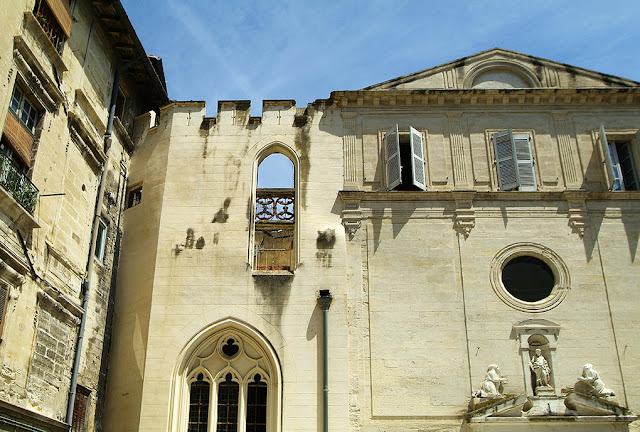
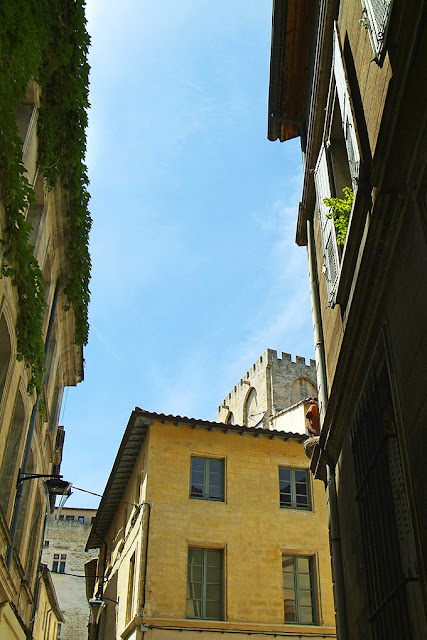
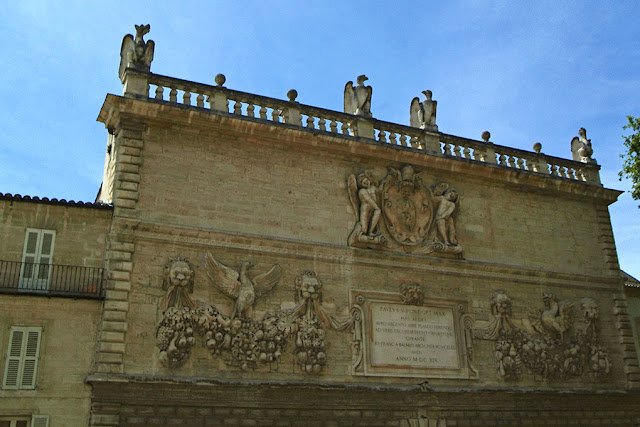
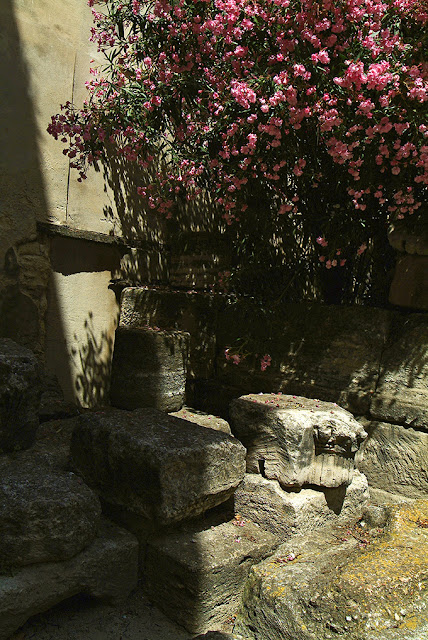
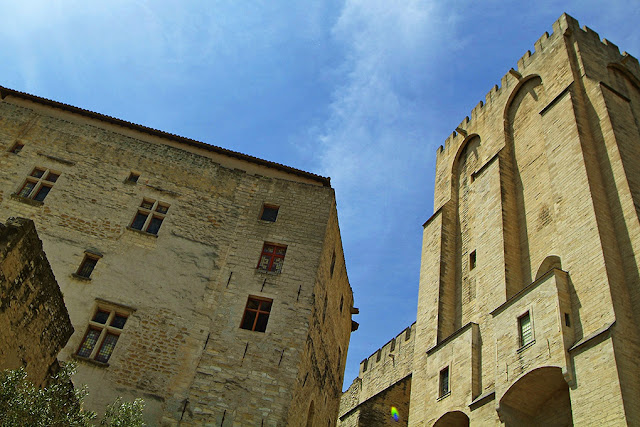
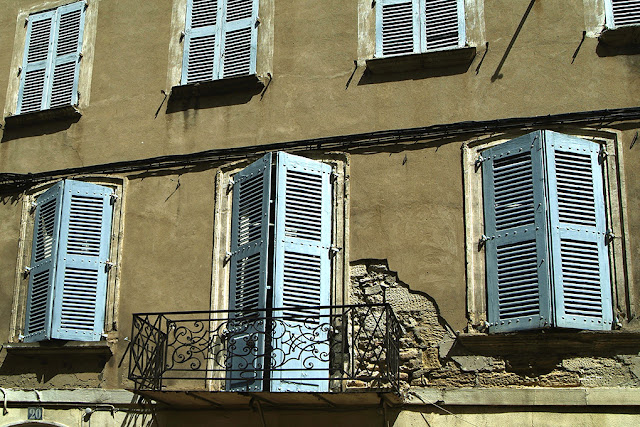
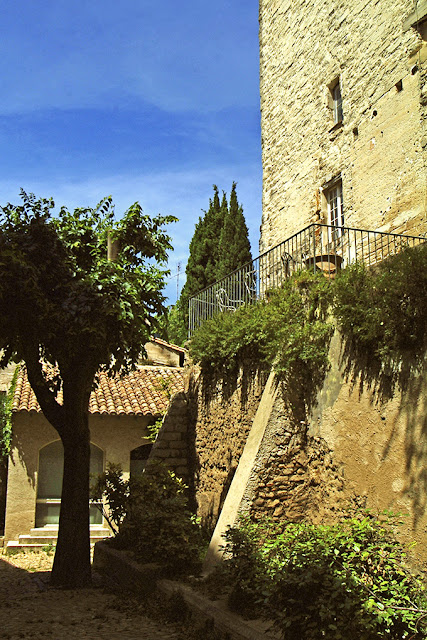

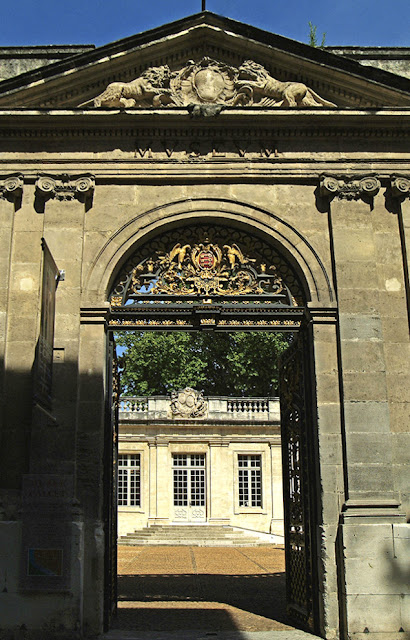
Thank you so much Ana Paula!! I had no idea that I had a reader friend in Brazil. So glad you are here…
Your blog is so special to me… Congratulations for all your posts and beautiful comments…
Ana Paula
from Brazil
Yes! You will have a willing hostess…and two furry friends to greet you if you do…
You have been twice?! So close and yet so far!!!!
And yes, a chat is in order soon… 🙂
It is and I agree totally with you! If you could see how HUGE the Palace is…well, it did its job of being awe-inspiring…
Let me know if you do!
Heehee…I think a lot of us first learned about the French Revolution from Les Mis! But oh yes, major destruction – especially in such a religious town as Avignon. Parts of the Palais des Papes were used as a prison and afterwards people would cut out the frescoes on the walls to sell to tourists!
How neat that you did a restoration project. Would like to hear more about that one day. 🙂
Oh good! I forgot to put the link to Wiki as I often do although I also used local sources – there is so much to take in and learn about all of this! I feel like I touched the tip of the iceberg!
Merci, Cleo! 🙂
You are welcome beautiful Sister! I love you!
Judi, I didn't include the bridge but did you know that it was originally 22 arches long compared to the just 4 we see today?! Isn't that amazing…
Merci Edgar but in looking at them on my laptop the color seems extreme. I need to use Remi's "spider" to re-align the colors on my desktop.
And yes, it seems like a very dark period for Christianity, although there were certain Avignon popes that did try to do good…
So true, Emily…can you imagine the stories?!
When I am fortunate enough to find myself in Europe, I am awed by the architecture in all its grandeur and nuance. Avignon is a city I've never visited, but you have no whet my appetite! I rarely make it to the South when I am in France, but I have spent a bit of time in Nice and Aix, and visited Marseille… but it's been much too long.
What a fascinating history, Heather. All the more reason to find a way to get back over…
I have been there TWICE.Fascinating the POPE was moved there………….
As another commenter said, "if only those walls could chat!"
I need a chat with YOU!
XO
Avignon is so beautiful and your photos certainly do it justive. I find these old, historic so awe-inspiring and grand that sometimes they seem to feel a bit other-worldly (is that even a word?).
We must get back to Avignon one of these days. Great article, Heather.
I am always happy when I have a new blog post of yours to read! And this one is particularly fun for me. Avignon was the first French town I explored on my own when I first visited France (on my own, as this was before I had met Steve) in 2002. I was working on a restoration project in St Victor la Coste for 6 weeks, and needed a little time on my own. I took a cab (!) to Avignon and spent the day wandering and wandering, completely entranced. I have returned many times since then, and still don't feel like I have a grasp of the town. Always something new to explore and find! The last time I was there (with Steve this time…yay!) we found a whole neighborhood we did not even know existed! Thank you for the history lesson! I had not thought of the impact the Revolution would have had in the south…funny that in my mind, at least, the Revolution happened only in Paris! I can thank "Les Mis" for that little misconception! 😉
This post is a wonderful history lesson! It sent me to Wikipedia to learn more. Now I want to visit even more so than before! Thank you!
Absolutely fabulous post!
Wow – who knew? (all that history!). You're right, it doesn't have the warmth of Arles but it still looks beautiful, especially with that SKY! Thank you for this informative, beautiful post, beautiful sister!
Oh to be there again! Love to go up to the Parc,des Doms, and then later partake of the busyness and happiness of the main squares. Loved your history lesson – so amazing how a city "lived" through all of that! Fascinating place! "sur le pont d'Avignon, l'on y dance tout en ronde". I can see the bridge and ramparts right now!
One of the very sad times in the history of the Church.With remarkable irony there were some glorious cultural consequences. Avignon,one more place to visit.
Again you showed an artistic use of light and angles for the wonderful photos.
Thank you.
If only those walls, stones and shutters could talk. I love how these towns just ooze of history and tales. Beautiful images and stories to contemplate. xo, ebh